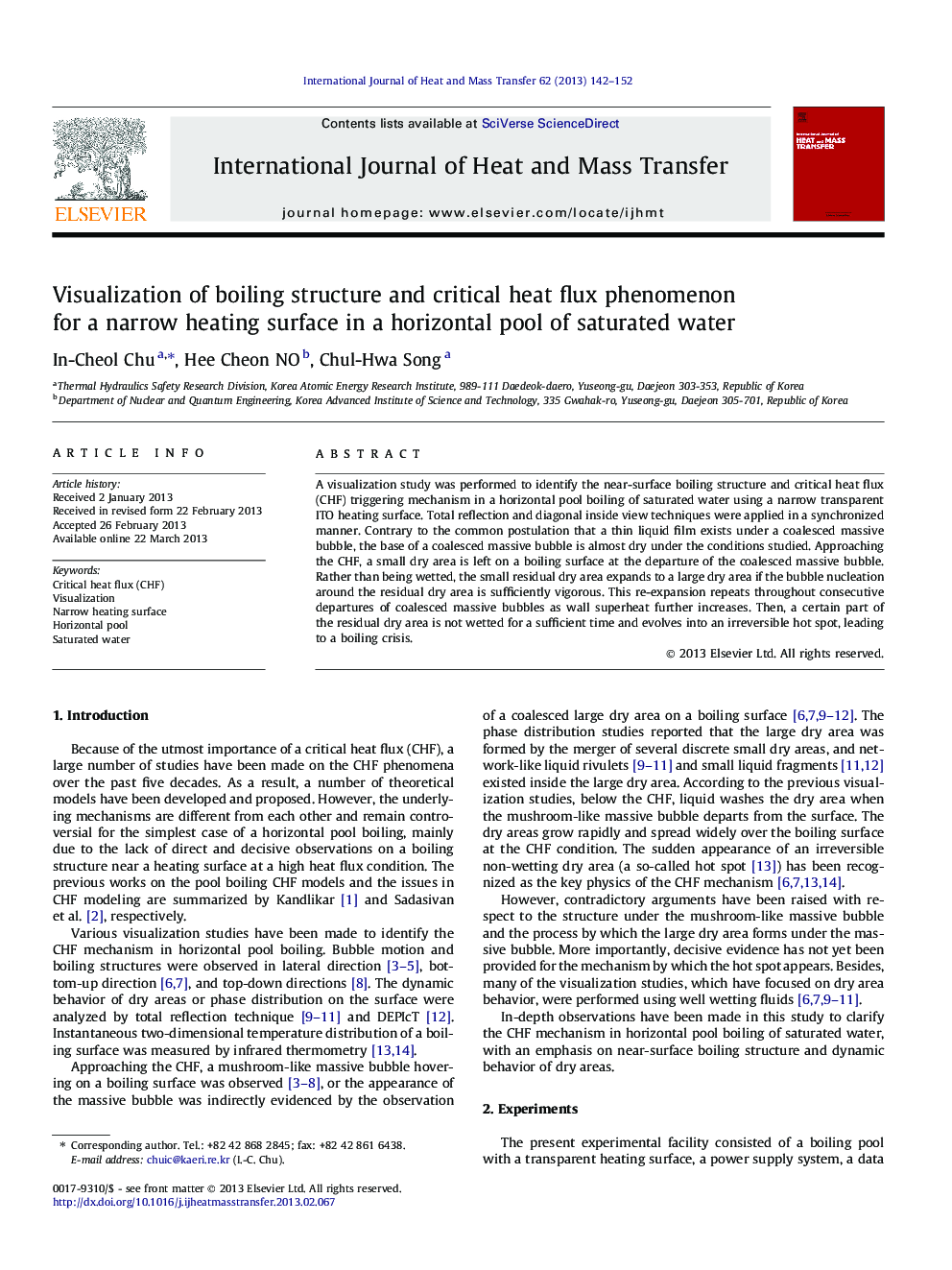| Article ID | Journal | Published Year | Pages | File Type |
|---|---|---|---|---|
| 658200 | International Journal of Heat and Mass Transfer | 2013 | 11 Pages |
Abstract
A visualization study was performed to identify the near-surface boiling structure and critical heat flux (CHF) triggering mechanism in a horizontal pool boiling of saturated water using a narrow transparent ITO heating surface. Total reflection and diagonal inside view techniques were applied in a synchronized manner. Contrary to the common postulation that a thin liquid film exists under a coalesced massive bubble, the base of a coalesced massive bubble is almost dry under the conditions studied. Approaching the CHF, a small dry area is left on a boiling surface at the departure of the coalesced massive bubble. Rather than being wetted, the small residual dry area expands to a large dry area if the bubble nucleation around the residual dry area is sufficiently vigorous. This re-expansion repeats throughout consecutive departures of coalesced massive bubbles as wall superheat further increases. Then, a certain part of the residual dry area is not wetted for a sufficient time and evolves into an irreversible hot spot, leading to a boiling crisis.
Related Topics
Physical Sciences and Engineering
Chemical Engineering
Fluid Flow and Transfer Processes
Authors
In-Cheol Chu, Hee Cheon NO, Chul-Hwa Song,
